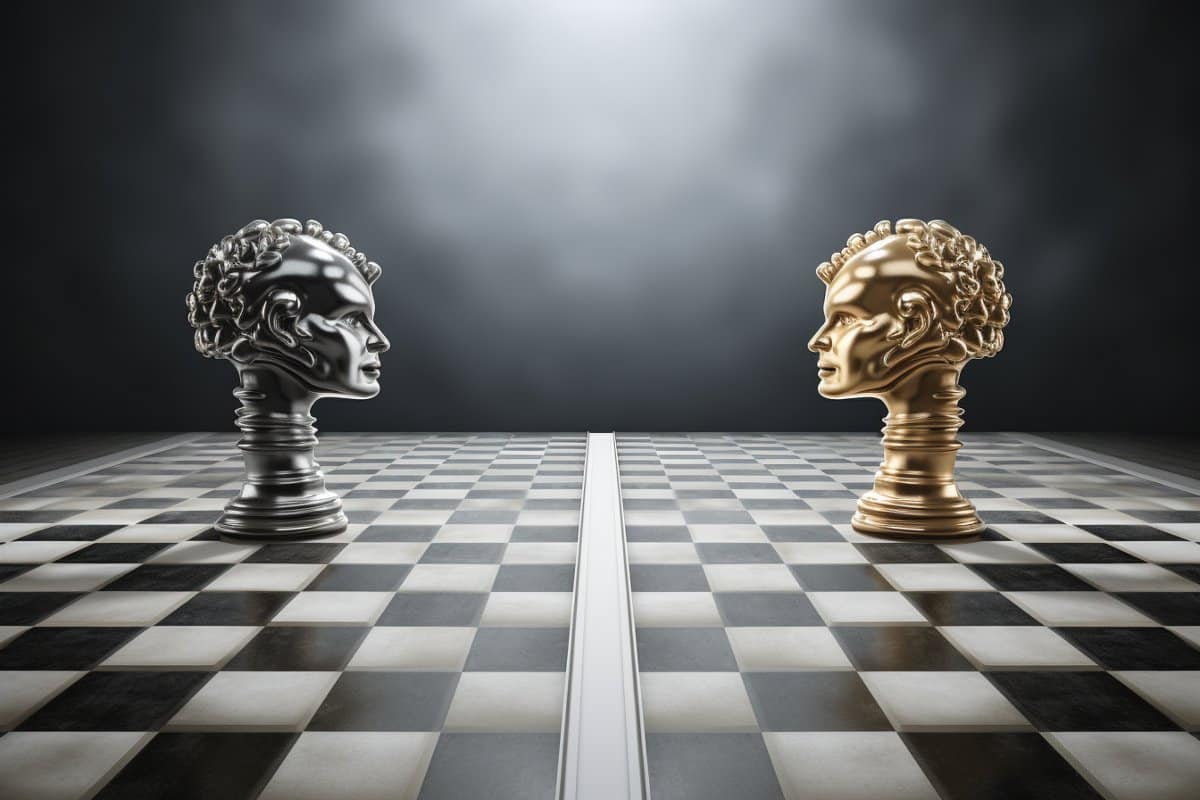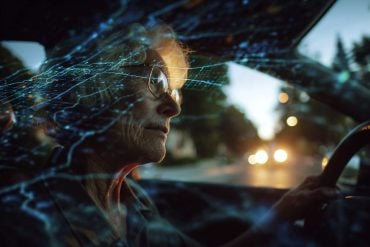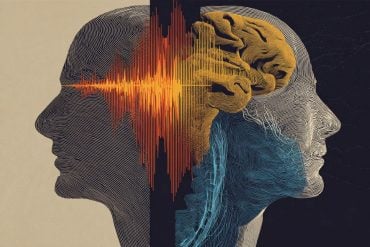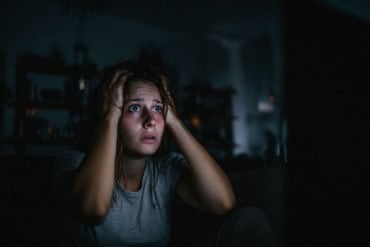Summary: New study on mice decision-making reveals that choice is not a singular moment but a reflection of the brain’s preexisting state.
The research, using Buridan’s Assay, suggests that the mice’s brain constantly broadcasts its goal, even before options are available, with patterns of neuron activity predicting choice.
Hunger and thirst don’t directly drive behavior; instead, they modulate the brain’s goal-setting, with an element of randomness causing switches between needs, ensuring both are met over time.
Key Facts
- Hunger and thirst modulate mice’s behavior indirectly, affecting the brain’s goal rather than directly motivating choice.
- Neuron activity patterns across the brain can predict a mouse’s choice even before it faces options, indicating a constant broadcast of the brain’s current goal.
- Randomness plays a key role in decision-making, with mice often repeating choices before abruptly switching, ensuring both hunger and thirst needs are eventually fulfilled.
Source: Stanford
Making decisions is hard. Even when we know what we want, our choice often leaves something else on the table. For a hungry mouse, every morsel counts. But what if the decision is more consequential than choosing between crumbs and cheese?
Stanford researchers investigated how mice resolve conflicts between basic needs in a study published in Nature on Nov. 8. They presented mice that were both hungry and thirsty with equal access to food and water and watched to see what happened next.
The behavior of the mice surprised the scientists. Some gravitated first toward water, while others chose food. Then, with seemingly “random” periods of indulgence, they switched back and forth.
In their study, PhD candidate Ethan Richman, lead author of the paper, and colleagues in the departments of Biology, Psychiatry and Behavioral Sciences, and Bioengineering explored why.
This work builds on years of collaboration between co-senior authors Karl Deisseroth, the D.H. Chen Professor at Stanford Medicine, and Liqun Luo, the Ann and Bill Swindells Professor in the School of Humanities and Sciences, to understand how the brain keeps the body alive.
Buridan’s what?
“There’s this old philosophical quandary called Buridan’s Ass,” explained Richman, “where you have a donkey that is equally hungry and thirsty and equally far from food and water.”
The concept was posited by philosophers Aristotle, Jean Buridan, and Baruch Spinoza, in different forms. The question was whether the donkey would choose one need over the other or remain stubbornly in the middle.
But animals are constantly making choices. We must satisfy our needs to maintain homeostasis. Richman and colleagues wanted to know how the brain directs traffic through conflicting signals to flout Buridan. They call their behavioral experiment “Buridan’s Assay.”
If hunger or thirst directly motivated a mouse to eat or drink, it would switch as soon as one need outweighed the other. When needs were equal, the mouse would be stuck. This is not what the researchers observed.
“Our data indicate that thirst and hunger don’t act as direct forces on behavior,” said Richman. “Instead, they modulate behavior more indirectly. They’re influencing what we think of as the current goal of the mouse.”
A mouse’s goal
We often think of choices as a decisive moment. The researchers wanted to understand when and where choices between food and water originate in the brain. Using recent advances in recording technology, they monitored activity from individual neurons spread across the mouse brain.
To their surprise, neuron activity patterns throughout the brain predicted the mouse’s choice, even before it was presented with options.
“Instead of a single moment of choice, the mouse’s brain is constantly broadcasting its current goal,” said Richman.
“Outcomes of the hardest choices you make – when options are closely balanced in importance, but the categories are fundamentally different – may have to do with the state your brain happened to be in, even before the choice was presented,” said Deisseroth.
“That’s an interesting outcome and it helps us understand aspects of human behavior better.”
Exploring the random
The researchers found that hungry and thirsty mice often make the same choice repeatedly before suddenly switching.
“In eating mode, the mouse will just eat and eat. In drinking mode, it will drink and drink,” said Luo.
“But there is an aspect of randomness that causes them to switch between these two. That way, in the long run, they fulfill both needs, even if at any given time they are only choosing one.”
To test this apparent randomness, the researchers ran another experiment, this time with hungry mice. As the mice ate, scientists introduced thirst through a technique called optogenetics.
With optogenetics, they used light to activate neurons causing thirst. Sometimes the mice switched to water, and sometimes they ignored it and kept eating. The level of thirst was the same each time, leading the researchers to conclude there is a key randomness influencing the mouse’s goal.
The scientists were perplexed by the interplay between this randomness and the relative intensities of hunger and thirst. To better understand it, they turned to mathematical modeling. Inspired by a conceptual resemblance between their results and a distant field of physics, the researchers borrowed, tweaked, and simulated several equations.
“We were extremely surprised and excited to find that a few simple equations from a seemingly unrelated discipline could closely predict aspects of mouse behavior and brain activity,” said Richman.
The results of their modeling suggested that the brain activity relating to the mouse’s goal is constantly in motion. It gets trapped by needs like hunger and thirst. To escape and transition from one goal to another, the mouse relies on a lucky series of random activity.
This work establishes the importance of the brain’s shifting baseline state when it comes to decision-making. In the future, the researchers will explore what sets the tone and why decisions don’t always make sense.
Beyond Buridan
“In terms of Buridan’s Ass, we can say that the donkey’s mind is made up before it is given a choice,” says Richman, “and if it has to wait, then its choice may spontaneously switch.” Clinical applications for this work in the human context are a bit more complex.
“As a psychiatrist, I often think about how we make healthy (adaptive) or harmful (maladaptive) decisions,” said Deisseroth. (Maladaptive behaviors impact people’s ability to make decisions in their best interest and they are common in psychiatric disorders.)
“It’s very hard for family and friends to see loved ones act against their own survival drives. It may help to understand the choices made as reflecting the underlying dynamical landscape of the patient’s brain, affected by the disorder more than by the patient’s conscious volition.”
Although this work might not explain human behavior, it begins to reveal an important framework for decision-making. “This is basic discovery science that depends on pretty advanced neuro-engineering, but at the core we address universal questions that people think about and experience all the time,” said Deisseroth.
“It’s exciting to develop and apply modern tools to address these very old, deep, and personal questions.”
Additional Stanford co-authors include former undergraduate student Nicole Ticea, BS ’20, who is now a PhD student at Stanford, and former graduate student William E. Allen, PhD ’19, who is now at Harvard University.
Deisseroth is also professor of bioengineering and of psychiatry and behavioral sciences, and a member of Stanford Bio-X and the Wu Tsai Neurosciences Institute.
Luo is also a professor of biology, a faculty fellow at Sarafan ChEM-H, and a member of Stanford Bio-X, the Stanford Cancer Institute, and the Wu Tsai Neurosciences Institute. Deisseroth and Luo are both are investigators of the Howard Hughes Medical Institute.
Funding: This work was funded by the National Science Foundation, the National Institutes of Health, and the Gatsby Foundation.
About this decision-making and neuroscience research news
Author: Taylor Kubota
Source: Stanford
Contact: Taylor Kubota – Stanford
Image: The image is credited to Neuroscience News
Original Research: Open access.
“Neural landscape diffusion resolves conflicts between needs across time” by Ethan Richman et al. Nature
Abstract
Neural landscape diffusion resolves conflicts between needs across time
Animals perform flexible goal-directed behaviours to satisfy their basic physiological needs. However, little is known about how unitary behaviours are chosen under conflicting needs.
Here we reveal principles by which the brain resolves such conflicts between needs across time.
We developed an experimental paradigm in which a hungry and thirsty mouse is given free choices between equidistant food and water. We found that mice collect need-appropriate rewards by structuring their choices into persistent bouts with stochastic transitions.
High-density electrophysiological recordings during this behaviour revealed distributed single neuron and neuronal population correlates of a persistent internal goal state guiding future choices of the mouse. We captured these phenomena with a mathematical model describing a global need state that noisily diffuses across a shifting energy landscape.
Model simulations successfully predicted behavioural and neural data, including population neural dynamics before choice transitions and in response to optogenetic thirst stimulation.
These results provide a general framework for resolving conflicts between needs across time, rooted in the emergent properties of need-dependent state persistence and noise-driven shifts between behavioural goals.








